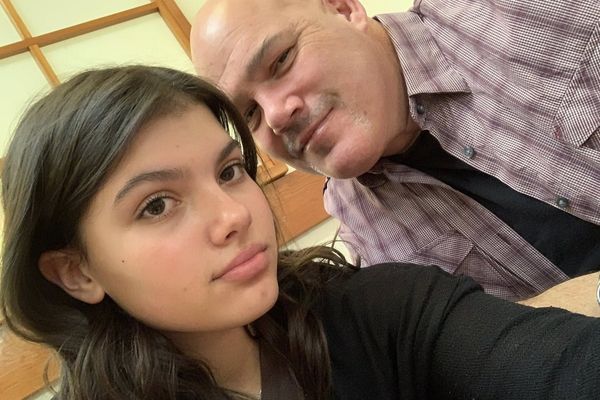LARGO, Fla. — They beckon from the walls in the galleries at Creative Pinellas: beautiful Black men, women and children, intertwined with plants and flowers as if they are morphing together.
And although they look photorealistic, they were created with artificial intelligence.
“Imagine Blackness: Alternate Realities and Collective Dreaming” is the brainchild of husband-and-wife duo McArthur Freeman II and Elizabeth Hordge-Freeman.
Inspired by Afrofuturism and Black speculative fiction, the art is intended to create alternate realities as a way to retell Black stories, a form of social intervention. Sometimes they look to the future, but they can also be reimagined from the past or even the present, McArthur said.
“Afrofuturism at its core is about hope,” Elizabeth said. “So the images that Afrofuturists tend to produce ... respond to some of the problems of today by imagining what Blackness or the experiences of Black people could look like in the future, in these alternate worlds or alternate universes.”
McArthur is an artist with a master’s of fine art in painting from Cornell University. He is an associate professor of video, animation and digital arts at the University of South Florida. Recently, he’s been exploring digital sculpting, 3D scanning and 3D printing.
Elizabeth is a sociologist whose work explores systems of racial trauma, racism and sexism that affect Black women in the U.S. and Brazil, a topic she has written several books on. She has a Ph.D. in sociology from Duke University and is an associate professor of sociology and interim associate vice provost at USF.
In an interview before the exhibit opened, Elizabeth described the collective trauma for Black people that came as a reaction to George Floyd’s murder and police brutality. While discussing these issues, she and McArthur wanted to address them in a more positive way that was “still in dialogue with the realities we’re facing,” she said.
They are also responding to the limited range of Black representation in the mainstream by creating images of people with features they see in themselves and their community.
“(It) is really about affirmation,” McArthur said. “There’s an aspect of escape, which was also needed during the past few years. So, it’s also about positively envisioning and still reflecting on this idea of that need for more diverse representation.”
The images are created with text prompts, and the words play a vital role. McArthur said they view the words as seeds that create possibilities beyond current constraints. Some were created with specific narratives, while others are left open for interpretation.
Existing software is used to help generate the images, but the artists are able to create unique images based on the ideas.
As for the ongoing debate about artificial intelligence in art, McArthur is excited about the technology’s accessibility.
“It offers some very, very powerful tools. It is a disruptive technology and we can expect to see a lot more from AI in that space,” he said. “I think that what happens when you have disruptive technologies like that is they get us to question and sort of reevaluate the values of the ways that we have been doing things all along. There are certainly some ethical concerns about how some of the AI systems are trained and to what extent individuals have been included. But then there are also questions about how much of that is actually just fair use. AI really has amazing potential to be able to create and generate images.”
Elizabeth said the next step for users of artificial intelligence — especially for her as a professor — is to cultivate the skills, abilities and contributions that are not easily produced by a computer.
A video loop playing on a screen in the gallery at Creative Pinellas shows even more images the pair has created. The influence of science fiction comes through on many of these futuristic visions.
“Postcards from the Future” is a series of snapshot-sized images of people enjoying the beach, but maybe it’s a beach on another planet or even in another universe.
In that section is an activity that lets people imagine their own postcards by filling out forms that ask detailed questions about place, time, people and change. The Freemans will create images that will stream on a screen in the gallery. It’s a cool glimpse into their creation process.
But the couple’s intention for the exhibit is much more meaningful than the technology it uses.
“We were really interested in people walking away feeling energized about the future,” Elizabeth said. “There’s a lot for us to be concerned about if we only focus on today. We hope people walk away remembering that not only is the future in store for us, but what we do and how we think in the present is directly related to what we can achieve in the future. We have to maintain that hope in order to be able to cultivate and ultimately construct the future where everybody feels represented.”
____
If you go
“Imagine Blackness: Alternate Realities and Collective Dreaming.” On view through Feb. 26. Free. The Gallery at Creative Pinellas. 12211 Walsingham Road, Largo. Noon-5 p.m. Wednesday-Sunday. 727-582-2172. creativepinellas.org.







